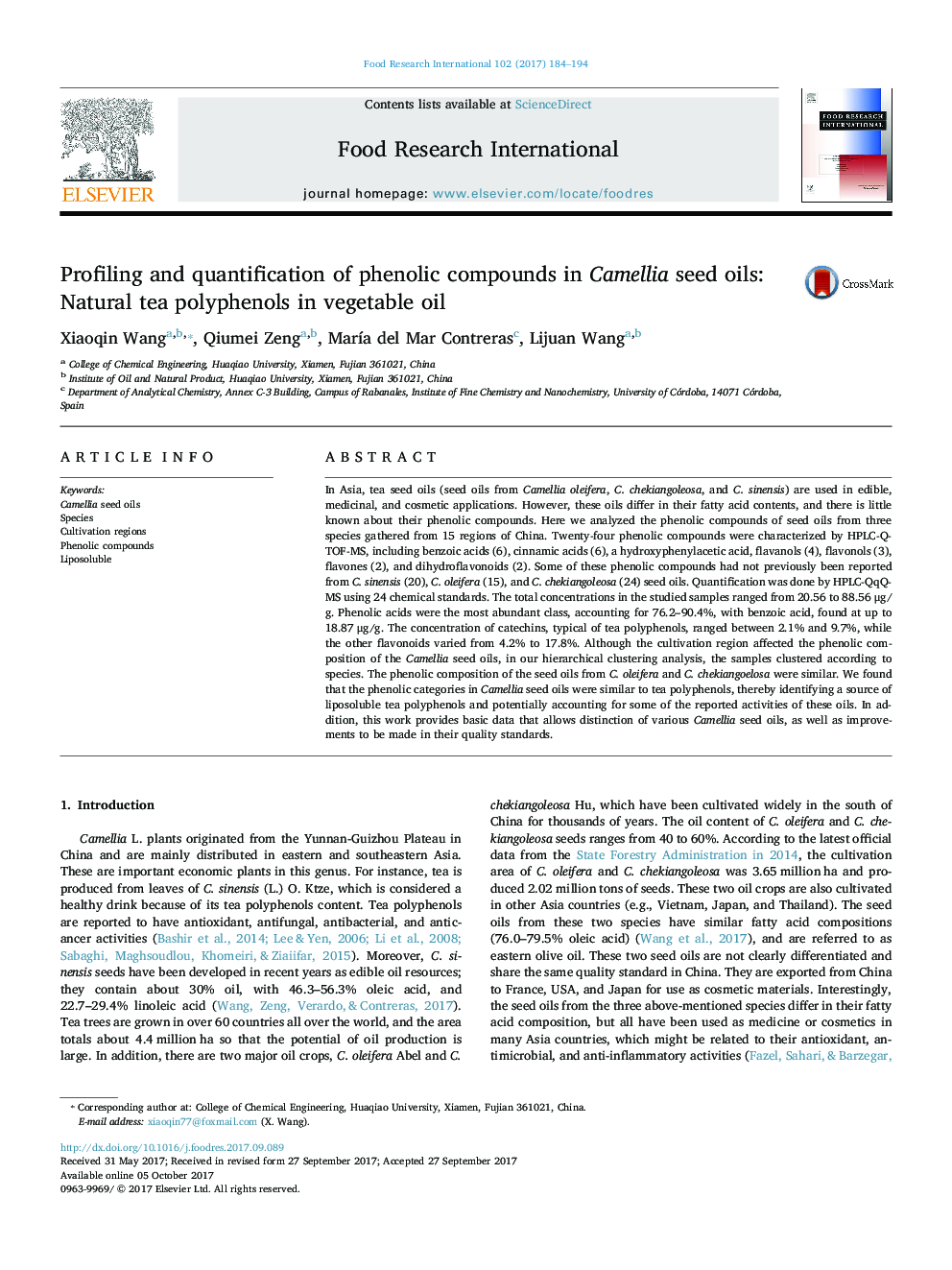| کد مقاله | کد نشریه | سال انتشار | مقاله انگلیسی | نسخه تمام متن |
|---|---|---|---|---|
| 5767774 | 1628449 | 2017 | 11 صفحه PDF | دانلود رایگان |
- Analysis methods were developed to study phenolic compounds in Camellia seed oils.
- A total of 24 phenolic compounds were identified in Camellia seed oils.
- The phenolic categories in Camellia seed oils were similar to tea polyphenols.
- The phenolic composition of C. sinensis seed oils is different from other species.
- C. oleifera and C. chekiangolesa seed oils have a similar phenolic composition.
In Asia, tea seed oils (seed oils from Camellia oleifera, C. chekiangoleosa, and C. sinensis) are used in edible, medicinal, and cosmetic applications. However, these oils differ in their fatty acid contents, and there is little known about their phenolic compounds. Here we analyzed the phenolic compounds of seed oils from three species gathered from 15 regions of China. Twenty-four phenolic compounds were characterized by HPLC-Q-TOF-MS, including benzoic acids (6), cinnamic acids (6), a hydroxyphenylacetic acid, flavanols (4), flavonols (3), flavones (2), and dihydroflavonoids (2). Some of these phenolic compounds had not previously been reported from C. sinensis (20), C. oleifera (15), and C. chekiangoleosa (24) seed oils. Quantification was done by HPLC-QqQ-MS using 24 chemical standards. The total concentrations in the studied samples ranged from 20.56 to 88.56 μg/g. Phenolic acids were the most abundant class, accounting for 76.2-90.4%, with benzoic acid, found at up to 18.87 μg/g. The concentration of catechins, typical of tea polyphenols, ranged between 2.1% and 9.7%, while the other flavonoids varied from 4.2% to 17.8%. Although the cultivation region affected the phenolic composition of the Camellia seed oils, in our hierarchical clustering analysis, the samples clustered according to species. The phenolic composition of the seed oils from C. oleifera and C. chekiangoelosa were similar. We found that the phenolic categories in Camellia seed oils were similar to tea polyphenols, thereby identifying a source of liposoluble tea polyphenols and potentially accounting for some of the reported activities of these oils. In addition, this work provides basic data that allows distinction of various Camellia seed oils, as well as improvements to be made in their quality standards.
140
Journal: Food Research International - Volume 102, December 2017, Pages 184-194
